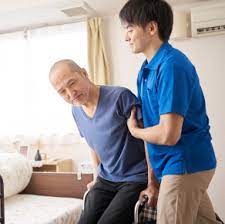For thousands of Australians, the NDIS is more than funding—it’s a pathway to inclusion, independence, and genuine connection. One of the most effective ways participants experience this? Through ndis social groups—regular, vibrant gatherings that encourage interaction, growth, and fun.
Whether it’s cooking workshops, local excursions, or fitness classes, these group programs provide something bigger than just activities. They build community.
Understanding the Real Value Behind an NDIS Package
The average annual NDIS plan is worth around $70,000, according to data from the NDIS Quarterly Report. But how that funding gets used is what really matters.
Participants might allocate part of their budget to therapies, support workers, or home modifications. However, more and more Australians are dedicating funds to social participation—because connection is essential, not optional.
That’s where ndis social groups come in. These programs are often funded under Core Supports (social and community participation), offering structured, meaningful activities that encourage interpersonal engagement.
Why Social Groups Matter in Everyday Life
Imagine this:
Daniel, a 22-year-old with autism, attends a weekly music and movement class through an NDIS-funded program. Over time, his speech improves, his confidence grows, and he starts planning catch-ups with classmates outside of sessions.
This isn’t a rare story. It’s happening across Australia, from metro Melbourne to remote regional towns.
ndis social groups create opportunities for:
- Building friendships in safe, supportive settings
- Learning new skills through arts, cooking, drama, and tech-based workshops
- Boosting mental health by reducing isolation
- Encouraging independence through structured planning and choice-making
- Improving communication via group tasks and peer interactions
Types of NDIS Social Groups Participants Can Access
There’s no one-size-fits-all formula—group programs are as diverse as their participants. Here are a few common types:
- Life skills groups: Teach budgeting, cooking, using public transport
- Creative expression: Art therapy, dance, photography and drama clubs
- Active lifestyle sessions: Group fitness, yoga, swimming, nature walks
- Social clubs: Coffee catch-ups, movie nights, bowling leagues
- Learning-based programs: Literacy classes, computer skills, hobby development
The key is that participants aren’t just “attending”—they’re contributing, making decisions, and being heard.
And programs like these are backed by real professionals—support workers and facilitators who know how to keep things inclusive and flexible.
To explore a full list of ndis social groups, check out ndis social groups.
What Makes a Great NDIS Social Group?
Not all groups deliver the same value. The most impactful programs share a few key traits:
- Consistent scheduling: Regular meetups build trust and routine
- Low group ratios: More one-on-one interaction and support
- Diverse activities: Something for every interest or skill level
- Personalised goals: Progress is tracked, but pressure is off
- Community access: Participants get out and engage with public spaces
These aren’t just “social activities”—they’re stepping stones to greater life participation.
If you’re curious about how to get involved, have a look at the current ndis social groups listed here: ndis social groups.
Real Stories. Real Impact.
Take Sarah, a young adult living with Down syndrome. Two years ago, she joined a local art group funded through her NDIS plan. Today, her paintings are on display in a local gallery.
Or consider Eli, a 14-year-old with ADHD who used to struggle with routines. Since joining a Friday after-school group that mixes physical activity with structured play, he’s become more focused, cooperative, and calm at home.
These stories aren’t outliers—they’re common outcomes of properly funded ndis social groups.
Want to browse current options in your region? Head to this listing of ndis social groups.
Final Thought: More Than a Budget Line
When asking, “What is the average NDIS package worth?”—the answer depends on how that budget is used.
For many Australians, the greatest returns come from investment in connection—through group programs that spark creativity, community, and capability.
These aren’t “extra” benefits. They’re essential parts of life, made possible through thoughtful allocation and community-based delivery.
If you’re supporting someone on the NDIS, or you’re an NDIS participant yourself, don’t overlook the power of social groups. Sometimes, the most profound changes start with a shared laugh at a group barbecue or a creative moment in an art session.

